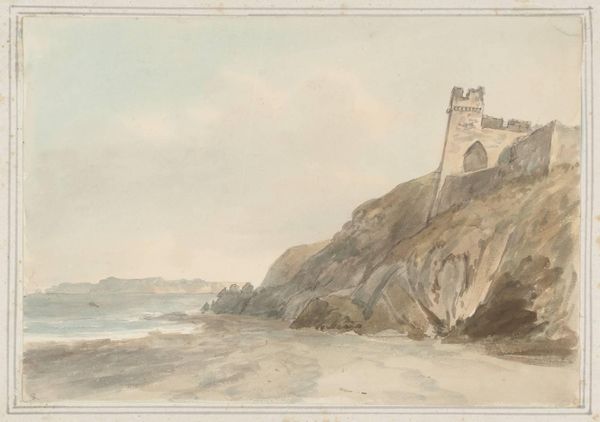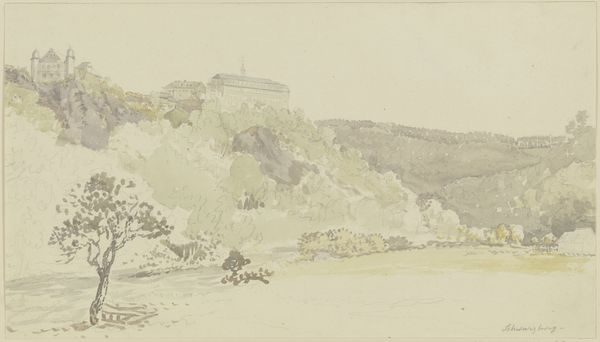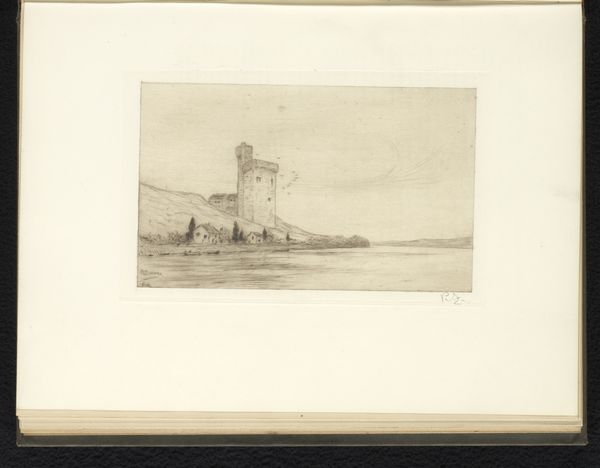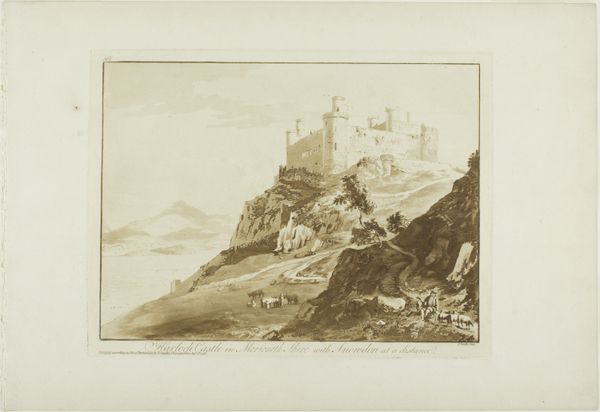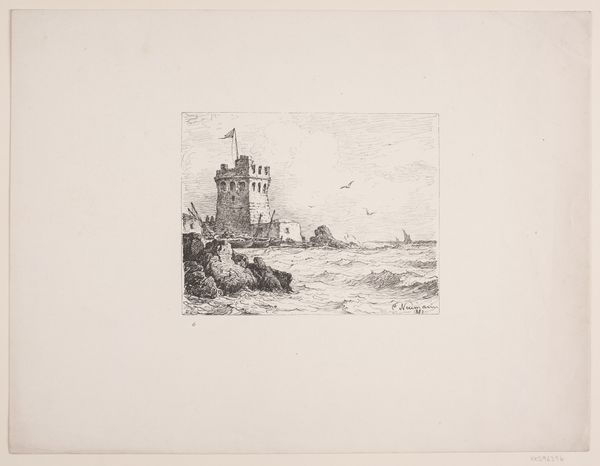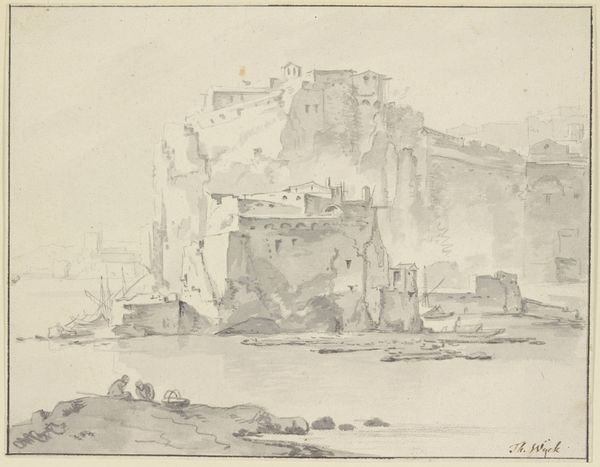
photography
#
landscape
#
photography
Dimensions: Image: 15.9 × 21.1 cm (6 1/4 × 8 5/16 in.)
Copyright: Public Domain
Curator: John Dillwyn Llewelyn created this landscape titled "Tenby Sands" in 1856, and it's currently held at the Metropolitan Museum of Art. Editor: It feels almost ghostly. That subdued sepia tone gives the scene such a melancholic weight, doesn't it? Curator: The tones absolutely define the composition. Llewelyn seems to have chosen his perspective carefully, using the light to emphasize the rough texture of the rocks and the solid forms of the buildings above. It's not just a record; it's a study in tonal contrasts. Editor: To me, the cliffs resemble the transience of time, how these rocky formations persist even as waves erode their bases, hinting at mortality and the endurance of place. The small, block-like architecture looming at the summit may be the imposition of people. Curator: Precisely, and I think we can see that structure play out on multiple levels. Observe how the diagonal lines of the rock face intersect with the horizontal lines of the shoreline, creating a structured yet natural visual rhythm. This suggests an underlying order that transcends the subject matter. Editor: That balance gives the photograph a grounding—despite the overall fading nature of the picture. The choice of perspective may reinforce ideas of journey and longing through open spaces and landmarks in time. Perhaps the sandy paths and lack of visible human presence underscore ideas of isolation, loss, and the inevitable imprint we leave behind. Curator: The choice of medium itself is interesting in that respect. Early photography involved an intensely technical and precise manipulation of light and chemistry to fix an image. The effort required suggests something about the intention and labor put into this artwork, a labor of preservation against the vagaries of nature and time itself. Editor: I like how our perspectives seem to complement one another when appreciating such a richly layered piece. Curator: Indeed. Analyzing it reminds me how photography's material properties offer new means for comprehending nature's inherent forms and human responses through architecture and culture.
Comments
No comments
Be the first to comment and join the conversation on the ultimate creative platform.

